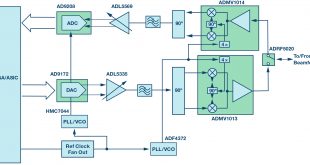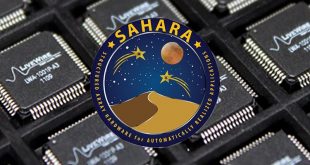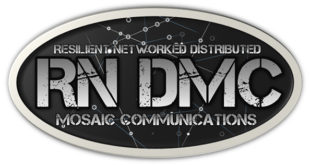Virtual Reality (VR) is the use of computer technology to create a simulated environment that can be similar to or completely different from the real world. Unlike traditional user interfaces like viewing a screen in front of them, users are immersed and able to interact with 3D worlds. Applications of …
Read More »TimeLine Layout
September, 2021
-
16 September
Millimeter wave (mmWave) power amplifiers enable mmWave Radios for 5G and Satellite Communications
Millimeter waves are electromagnetic signals with frequencies ranging from 30 to 300 GHz that correspond to wavelengths of 10 to 1 mm in the free space. Electromagnetic waves in the millimeter-wave band (with frequencies between 30 and 300 GHz, or wavelengths between 10 and 1.0 mm) have attractive characteristics. One of …
Read More » -
14 September
DARPA’s SAHARA to automate Structured ASICs production and enhance their security for defense electronic systems
Time to market demand has forced integrated circuit design, manufacturing and testing to be done at different places across globe. This approach has led to numerous security concerns like overbuilding of chips from foundries, IP protection, counterfeiting and hardware Trojans. Hardware Trojans (HT), which are malicious circuit inclusions into the …
Read More » -
14 September
DARPA RNDMC program developing Distributed Beamforming Antennas across air, ground, and sea assets, to provide long range tactical communication robust against failure or attack
DARPA, is proposing a new Mosaic Warfare strategy for evolving multidomain battlefield. Dr. Timothy Grayson, Director of the Strategic Technology Office is advocating for a “system of systems” approach that he’s calling mosaic warfare: the ability to piece together different systems to build new overarching warfighting capabilities. DARPA’s Strategic Technology …
Read More » -
12 September
Non-Line-of-Sight Imaging can be transformative in medicine, robotics, manufacturing, and security
We see things because our eyes are sophisticated light detectors: they constantly capture the light rays bouncing off nearby objects so our brain can construct an ever-changing impression of the world around us. Similarly in a camera, All the light traveling from the object enters a single lens before it …
Read More » -
11 September
Cyber attacks on Port facilities can cause disruptions to Shipping operations
Maritime networks have become an attractive playground for hackers, with cyber-attacks on vessel OT networks and systems increasing by 900% over the past three years. A ship’s onboard information technology and operational technology systems can be hacked just as easily as systems ashore. Such security breaches have the potential to …
Read More » -
10 September
UK Space Agency’s National Space Technology Programme (NSTP) to boost space innovation
The UK has a thriving space industry that generates an income of £14.8 billion [$20.57 billion] each year. The UK Space Agency’s aim is to drive growth into the UK economy by supporting the development of space technology and skills, as embodied in the UK Space, Innovation and Growth Strategy (Space …
Read More » -
10 September
Twisted light can provide 100-times faster fiber capacity and secure wireless data transmission to moving platforms like UAVs
Broadband fiber-optics carry information on pulses of light, at the speed of light, through optical fibers. But the way the light is encoded at one end and processed at the other affects data speeds. Basically, light or any other electromagnetic radiation has energy defined by its frequency and momentum defined by …
Read More » -
9 September
Twisted light technology
Space-division multiplexing (SDM) has recently attracted great attention as a promising technology to further improve the transmission capacity and spectral efficiency. Very recently, SDM employing twisted lights, also known as orbital angular momentum (OAM) carrying lights, provides an alternative approach to increasing the transmission capacity and spectral efficiency of optical communications. …
Read More » -
9 September
DARPA Toolbox Initiative to Accelerate Technology Innovation by providing performers easy, low-cost, scalable access to state-of-the-art tools and intellectual property (IP)
As the world continues to change and advance at a rapid pace, the need for continuous innovation has never been greater. DARPA’s open innovation model leverages the expertise and novel ideation found in large and small businesses, government organizations, and academic institutions. However, resource constraints across these organizations can limit …
Read More »
 International Defense Security & Technology Your trusted Source for News, Research and Analysis
International Defense Security & Technology Your trusted Source for News, Research and Analysis








